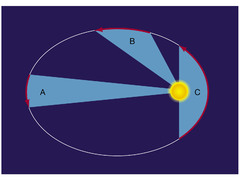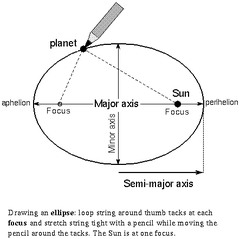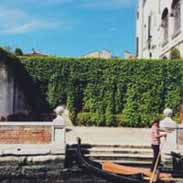Earth Science Honors: The birth of modern astronomy – Flashcards
Unlock all answers in this set
Unlock answersquestion
What age is this during
answer
the dark ages
question
whose ideas were quickly accepted by the Catholic Church.
answer
Ptolemy's
question
Many of the other ideas accepted as ______________ also came from the ____________ world.
answer
Cannon ancient
question
The Arabic world had been using the ideas of ________________, __________________, and their friends. As trade opened with Europe, these ideas came with it.
answer
Aristotle Hipparchus
question
Starting in the _______ century, the __________________ saw rise of much of what we call science today.
answer
14th Renaissance
question
what developed during the Copernican Revolution
answer
Now known as the Copernican Revolution, virtually all modern science and technology developed during this era.
question
Nikolas Kopernig: when around? what was he a fan of? practicing... what did he reintroduce?
answer
(1473-1543), A fan of math and astronomy, but a practicing lawyer, doctor, and a church official reintroduced the idea of a heliocentric solar system.
question
what did Nikolas Kopernig argue
answer
that the celestial sphere was not moving.
question
who explained how retrograde motion worked, explain
answer
Copernicus, And that it was caused by the fact that planets closer to the sun move faster around it.
question
what happened with Copernicus
answer
Copernicus did not have the ability to prove his model, and at this time experimentation was not accepted as an alternative to Aristotle's reasoning.
question
how did Ptolemy explain retrograde motion
answer
using epicycles
question
What did Copernicus eliminate
answer
eliminated the need for epicycles
question
How did Copernicus explain retrograde motion
answer
He explained that planets closer to the sun move faster, thus retrograde motion occurs as one planet "passes" the other.
question
paradigm shifting idea
answer
- The present PARADIGM (or prevailing scientific theory) is a way of seeing the universe around us. - Questions, research and interpretation of results is all in the context of this theory. - Viewing the universe in any other way requires a complete shift in thinking.
question
why was it so hard for people to switch from Ptolemy to Copernicus beliefs?
answer
Replacing a theory that had been believed to be correct for nearly 2000 years is not easy.
question
what was Copernicus charged with, what was he forced to do, how long was imprisoned for?
answer
Copernicus was eventually charged with heresy, forced to recant, and imprisoned for the last part of his life.
question
when did Galileo Galilei live
answer
1564-1642, 100 years after Copernicus
question
______________________ model was still the rule. It was against church law to even mention _______________________ ideas.
answer
Ptolemy's Copernican
question
Who was the first modern scientist
answer
Galileo
question
How did Galileo change science
answer
He changed science from "faith-based" to "observation/experiment-based".
question
Galileo: what did study? what did he challenge? He laid the foundation for __________________________
answer
He studied objects in free fall. He challenged the idea that objects want to remain at rest. Newton's 1st Law.
question
Galileo: what was he the first to use? By using this what did it do for him?
answer
- first to use the telescope to observe the heavens. - What he saw and reported on challenged the establishment and brought him before the Inquisition.
question
Galileo: He fought for the _________________________ viewpoint. Where did his ideas lead him? what happened?
answer
- Copernican - His ideas landed him under house arrest for the rest of his life. - He was forbidden to study astronomy, but he used his time to make great strides in the pursuit of physics and (especially) mechanics. - Galileo was pardoned by the church...in 1992.
question
what did Galileo in 1609
answer
In 1609, Galileo made the first aided observations of the sky using the telescope.
question
Galileo: When seeing through his telescope what did this provide and what are the proofs?
answer
What he saw provided much of the proof that Copernicus never had: - Both the moon and the sun are not perfect. - Planets are big, circular disks, not just points of light in the sky. - Other objects have things revolving around them as well. - Venus goes through phases, like the moon.
question
Looking at Jupiter, Galileo noticed what?
answer
other "stars" near it that hadn't been seen before.
question
Daily observations showed that the number of "__________" changed. Galileo deduced (correctly) that the "__________" were actually what?
answer
stars stars 4 moons orbiting Jupiter
question
what were the four names of Jupiter's Moons? what are they known as?
answer
Io, Europa, Ganymede, and Callisto. "Galilean Moons".
question
what did Galileo find about the moon? The Sun? Saturn?
answer
Moon: - The moon was not a perfectly smooth sphere. - It had craters, mountains, and what he thought were oceans. - He made the first estimates of their height. Sun: - The sun had acne. - He noted several sunspots. Saturn: - Saturn had rings. - He thought they were moons too, but later studies showed different.
question
what was Galileo's final proof for a heliocentric universe
answer
venus, The only way to explain the phases of Venus is if the is between the Earth and the sun AND revolving around it.
question
When Galileo turned his telescope on Venus what did he observe
answer
he observed it go through phases, just like our moon.
question
when was Tycho Brahe around
answer
1546-1601
question
who was Tycho Brahe
answer
From Danish nobility, was the king's personal astronomer. JERK!!! - Got into numerous duels. - During one, part of his nose was chopped off. - It was his jerkiness that got him kicked out of his own country. - That, however, ultimately led him to meet Kepler, and change everything.
question
Tycho Brahe: Was given an ____________, where we created an _________________________. From this _______________________, he made some of the most detailed observations of the ________________________ ever. He was the epitome of the _________________________ observers.
answer
island observatory observatory night sky naked-eye
question
Tycho Brahe: who was he a supporter of? what did he have but also not have?
answer
He was a staunch supporter of Ptolemy, and had a ton of data, but didn't have the ability to create a sufficient model from it.
question
Johannes Kepler when was he around
answer
1571-1630
question
who was he and how did he get into astronomy and math?
answer
- Born into poverty, was able to enter the clergy and go to school. - While in college, overheard a speech from Copernican supporters and became hooked on math and astronomy.
question
what was Tycho and Kepler's relationship
answer
- Met and began working for Tycho. - Tycho was afraid of Kepler's intellect and that he'd show him up, so he only allowed him access to his data on Mars. - Once Tycho died, Kepler was given access to the rest of the data.
question
Kepler: In trying to describe why Mars showed retrograde motion, he came upon a paradigm-shifting discovery
answer
The orbits are ellipses NOT circles.
question
He also boldly exclaimed that "truth can only be found through _________________________________". Further studies lead him to creating _____________________________________
answer
experimentation 3 Laws of Motion
question
The 1st Law of Planetary Motion
answer
The orbits of planets and other celestial bodies around the Sun are ellipses.
question
Ellipse

answer
A curve for which the sum of the distances from any point on it to two points inside is always the same.
question
foci

answer
in the ellipse, those two points
question
The widest diameter of the ellipse is its ____________________________. Half of that is its _____________________________________ Its shape is called its _____________________________. It ranges from ______ (_______________________) to _______. The orbits of most planets are____________________________________________
answer
major axis. semimajor axis. eccentricity 0 (perfect circle) to 1 nearly circular.
question
what is eccentricity? what is earth eccentricity?
answer
shape of a planet's elliptical orbit- eccentricity = 0.0167 e = c/a (distance between foci/distance of whole eclipse)
question
The 2nd Law of Planetary Motion what is it also called?
answer
A line from the planet to the sun sweeps out equal areas in equal amounts of time. Also called the Equal Area Law. This means that the planet's orbital velocity will vary throughout the year. *****The planet moves faster when it is closer to the sun.
question
Earth is closest to the Sun in __________________ Earth is farthest from the Sun in _____________________
answer
January July
question
what is it called when planet is CLOSEST to the sun? what is it called when planet is FARTHEST to the sun?
answer
perihelion - CLOSEST aphelion - FARTHEST
question
The 3rd Law of Planetary Motion The period is measured in ________________ years. The distance is measured in _________________________________________ This final law was published _______ years after the first two.
answer
- The orbital period of a planet (P) squared is proportional to its average distance from the sun (a) cubed. - It gave an understanding for why the planets were spaced the way they were. P^2=a^3 - Earth - astronomical units (AU). - 10
question
astronomical units (AU)
answer
- This is the average distance from the Earth to the Sun (150,000,000 km). - It's the length of the Earth's semimajor axis.
question
Kepler's Laws provide a way for.... Using them made it possible to..... However, they only _________________, they don't explain the ______________ involved. Kepler left that for _____________________ to describe.
answer
- followers of Copernicus to explain motions. - make incredibly accurate predictions. describe forces Newton
question
Summary of the 3 Laws: Kepler's Laws
answer
1. Each planet moves in an ellipse with the Sun at one focus 2. the line connecting a planet and the sun sweeps out equal areas in equal times 3. for all planets, the orbital periods squared divided by the semimajor axis cubed is constant
question
Mass
answer
a measure of the amount of matter something has. It's "how much".
question
Volume
answer
a measure of how much space something takes up. It's "how big".
question
Density
answer
a measure of how much matter fits into a space. It's "how tightly packed".
question
Velocity
answer
a measure of how fast something is going in a certain direction.
question
Acceleration
answer
the change in velocity over time.
question
Acceleration occurs when:
answer
Speed increases OR decreases. The direction of motion is changed.
question
Sir Isaac Newton when was he around
answer
1643-1727
question
Sir Isaac Newton: what was he? when was his most important work done? what was most of his work centered on
answer
English Professor - @Trinity College of Cambridge. His most important work was done from 1665-1666. *****There was an outbreak of Plague and school was closed. Much of his work centered around using math to describe the work of the Copernican Revolution.
question
Sir Isaac Newton: Major achievements
answer
- Three Laws of Motion. - Universal Law of Gravity - Invented Calculus to better explain his observations.
question
In 1687, at the urging of Edumnd Halley (the comet guy), Newton publishes his ideas in a book: ________________________________________________
answer
Philosophiae Naturalis Principia Mathematica.
question
In the very beginning of the book, and only 59 words long (in latin), are 3 laws which set the stage for modern science and changed the way we look at the world:
answer
1st Law: An object in motion stays in motion and an object at rest stays at rest unless acted upon by some outside force. 2nd Law: An object will accelerate in the direction of the applied forces. 3rd Law: For every action, there is an equal and opposite reaction.
question
Newton: The force of gravity ___________________with ______________________distance. As the mass of one or both bodies ________________, so would the ___________. This led to a formula:
answer
decreases increasing increased force m1 and m2 are the masses of the two objects. R is distance between them. G is the constant of gravitation. G = 6.674X10-11 N(m/kg)2
question
Newton: This law suggests that gravity is _____________________________________________ Wherever masses occur, they will interact via _________________.
answer
a built-in property of mass. gravity
question
The universal law of gravity allows us to.........
answer
understand and predict the orbital motion of the planets and moons.
question
The path of an object through space is its ______________. The _________ and the ____________ attract each other through ______________. Since __________ is much more massive than the __________, the __________________ gravitational effect is _________.
answer
orbit Earth moon gravity Earth moon moon's small
question
The ______________________________________ constantly accelerates the moon toward the Earth. The moon is ________________ to the Earth - actually ____________ the Earth. Astronauts experience the same thing - they call it "__________________________".
answer
Earth's gravitational force falling around weightlessness *****They still have their weight, but they are falling around the Earth.
question
If we want to put a satellite in orbit, two things have to happen:
answer
1. We have to get off Earth. - Escape Velocity: the velocity needed to escape Earth's gravitational pull. It's 11 km/s (25,000 mph). 2. We need to stay within a range of velocities. - To fast, the object escapes into space. - Too slow, it crashes to Earth. - The velocity necessary to maintain a closed orbit is called the circular satellite velocity. - On Earth it is 8 km/s (17,500 mph). - The closer an object is, the faster that velocity must be.
question
Most satellites are in ______________________ It requires the _____________ amount of launch energy. It puts them about ____________ miles up. They orbit the Earth once every ______ minutes. They are still in the Earth's atmosphere. True or False They won't stay forever - there's enough friction to slow them down. True or False
answer
Low Earth Orbit. least 200 90 True True
question
what were the sun and earth considered
answer
For a long time, the sun and the Earth were considered just two bodies revolving around each other and affecting each other.
question
Newton's ideas about gravity, however, show that all things with mass exert a ___________________________ on each other.
answer
gravitational pull
question
Uranus had first been observed in _________, but was believed to be a star. In 1781, _____________________ saw it through his telescope. Wasn't sure what it was, but later calculations would show that it must be a ______________. It's orbit, however, was off a bit - too much to be explained by the gravitational influences of Saturn and Jupiter. In 1843, using Kepler's and Newton's Laws, two astronomers mathematically describe the orbit of a planet that could cause the weirdness.
answer
1690 William Herschel planet



